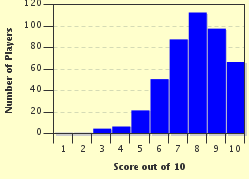Quiz Answer Key and Fun Facts
1. In my travels, I looked up into the sky and saw the Nile Star. What is its real name?
2. Wow! I thought I was seeing things; I blinked, and they were still there - what looked like millions of stars falling. It was August here in the northern hemisphere, so what was I seeing?
3. Vincent Van Gogh saw stars one night! They were so spectacular that he produced a great painting. This painting has gone down in history with what name?
4. One night when he was very ill, author Mark Twain saw an object in the sky, and he knew his time had come. That same object, he knew, was in the skies the night he was born. He had always said that when the object was seen again, he would die. What was the object?
5. For what two constellations are the lines of latitude defining the Tropics named?
6. This evening I looked up (still in the Northern Hemisphere) and saw a very bright object near the horizon. Many times it is the first star we see. Sometimes it is called the Evening Star, and sometimes the Morning Star. What am I seeing?
7. I later looked at the night sky and recognized a constellation I might see in Australia as well. It is called Corvus, and in Greek mythology it belongs to what Greek god?
8. The most recognizable stars in the northern night sky are the ones known as the Big Dipper, a group that many children could find and recognize. The Big Dipper is part of what larger constellation?
9. In the Southern Hemisphere between September and March, you can see the Milky Way. What is the name of the two stars that are near the horizon at that time?
10. Early explorers of the world really saw stars, having to navigate their ships by them! How did explorers like Prince Henry the Navigator or Bartolomeo Diaz, who rounded the southern extremity of Africa in 1486, find their way?
Source: Author
mpkitty
This quiz was reviewed by FunTrivia editor
Pagiedamon before going online.
Any errors found in FunTrivia content are routinely corrected through our feedback system.


